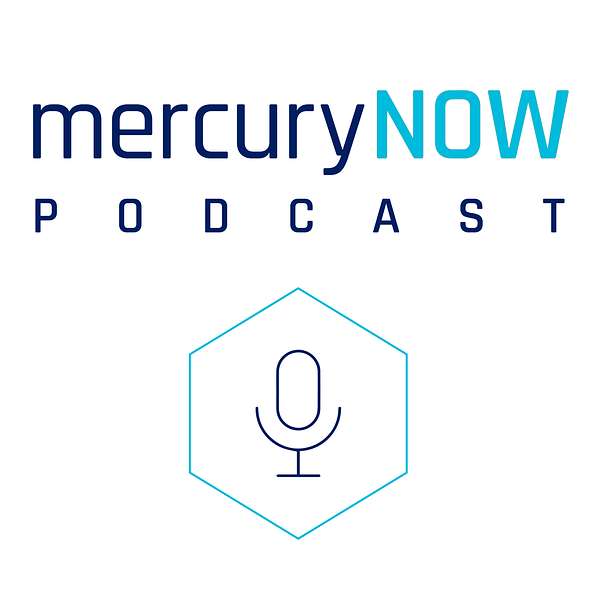
MercuryNOW
MercuryNOW
Bringing custom capabilities to a standard radar environment simulator: Meet the ARES3100
The ARES3100 is here—an advanced radar environment simulator for testing, training and comprehensive performance evaluation that leverages decades of technological innovation and is a proven, more affordable alternative to flight testing. In this MeruryNOW podcast, we discuss how Mercury is bringing custom capabilities to a standard system with a new advanced radar environment simulator.
Ralph Guevarez:
Hello, and welcome to MercuryNOW, a podcast series brought to you by Mercury Systems. I am your host, Ralph Guevarez, and today's topic, bringing custom capabilities to a standard system with a new advanced radar environment simulator. Joining me is Joe Styzens, our subject matter expert out of Spectrum Systems Group at Mercury Systems. Joe, good day, and welcome to the show.
Joe Styzens:
Hi, Ralph. Thank you for having me.
Ralph Guevarez:
Let's start with a bit of a background, Joe. Can you please tell our listeners a bit about your area of expertise, please?
Joe Styzens:
Sure. I started in the packaging industry and helped to develop the first beam steered laser marking system. I worked in this industry for 16 years and moved from R&D to product line manager to the worldwide sales and marketing manager.
Joe Styzens:
I decided I wanted to start my family, and traveling six months out of the year wouldn't work. So I switched industries to defense and got involved with the radar environment simulators as a program manager.
Joe Styzens:
Recently, Spectrum switched from a program-based approach to a product-based approach, and I was made the product line manager for the radar environment simulators.
Ralph Guevarez:
Thank you for the background, Joe. Now let's dive right into the questions, shall we? Can you tell our audience what a radar environment simulator is, please?
Joe Styzens:
A radar environment simulator is a generic radar target generator developed for radar testing and comprehensive radar performance evaluation. Think of it like a high-end flight simulator for a radar. It can support applications ranging from anechoic chambers, open air ranges, to laboratory-based production testing, and comprehensive radar performance evaluation.
Ralph Guevarez:
That sounds really interesting, Joe. Now this new product is an advanced radar environment simulator. Could you explain what the difference is, please?
Joe Styzens:
This advanced radar environment simulators brings in the capabilities that historically only a fully-customized built system had to offer. It brings these capabilities to the user in a more standardized option. The system is a baseline system that is designed to be modular and scalable. This offers the benefits of a lot of the technology needed to effectively test a radar and bring it to the customer faster without compromise. The system can then be scaled over time.
Ralph Guevarez:
Thanks. That sounds like there's a safety aspect to this as well. Now, are there any other benefits you'd like to mention?
Joe Styzens:
Absolutely. The ARES 3100 does support a safer end product, and really the pilot as well, with the ability to better test, validate, and optimize the radar systems in a controlled environment, as opposed to the range. The risks are minimized. It also allows pilot training for tactics.
Joe Styzens:
This doesn't stop at safety. There are benefits in regard to budget as well. Users can control environments and repeat them without a field test, which can be incredibly costly.
Joe Styzens:
Speaking of that field test, there's a security aspect as well. Users can test in an anechoic chamber farther from potential threats working to acquire sensitive waveform information.
Ralph Guevarez:
So Joe, am I understanding this correctly? Are you suggesting that the ARES 3100 can replace field testing?
Joe Styzens:
Yeah, with incredible reliability. We use suites of target modulations, weather effects, and validated EA techniques to ensure the system being tested truly believes it's out in the field experiencing these threats real time.
Ralph Guevarez:
Now, I'm excited to hear more success stories coming from ARES 3100. Is there anything else you'd like to add for our listeners, please?
Joe Styzens:
I think it's important to mention the ease of use. We got 20 years of experience and advancements built into this system. This provides us a large toolkit of options that can be added to the system. That extends to the graphical user interface as well. It's simple, user-friendly, and really brings the system together by offering high performance right out of the box. Offering a robust system like this with a short development timeline is really unparalleled.
Ralph Guevarez:
Thank you for that, Joe. Now, where can our listeners gather more information on the ARES 3100?
Joe Styzens:
I suggest referring to the podcast description for links to additional reading.
Ralph Guevarez:
Joe, I want to take this opportunity to thank you for joining me today. I'm excited to see what's next for your team and the new ARES 3100. I wish you and the Spectrum Processing Division the best of luck with your ever-expanding product portfolio. Thanks again.
Joe Styzens:
Ralph, it's been a pleasure. Thank you.
Ralph Guevarez:
This has been another edition of MercuryNOW, a podcast series brought to you by Mercury Systems. I am your host, Ralph Guevarez, signing off.